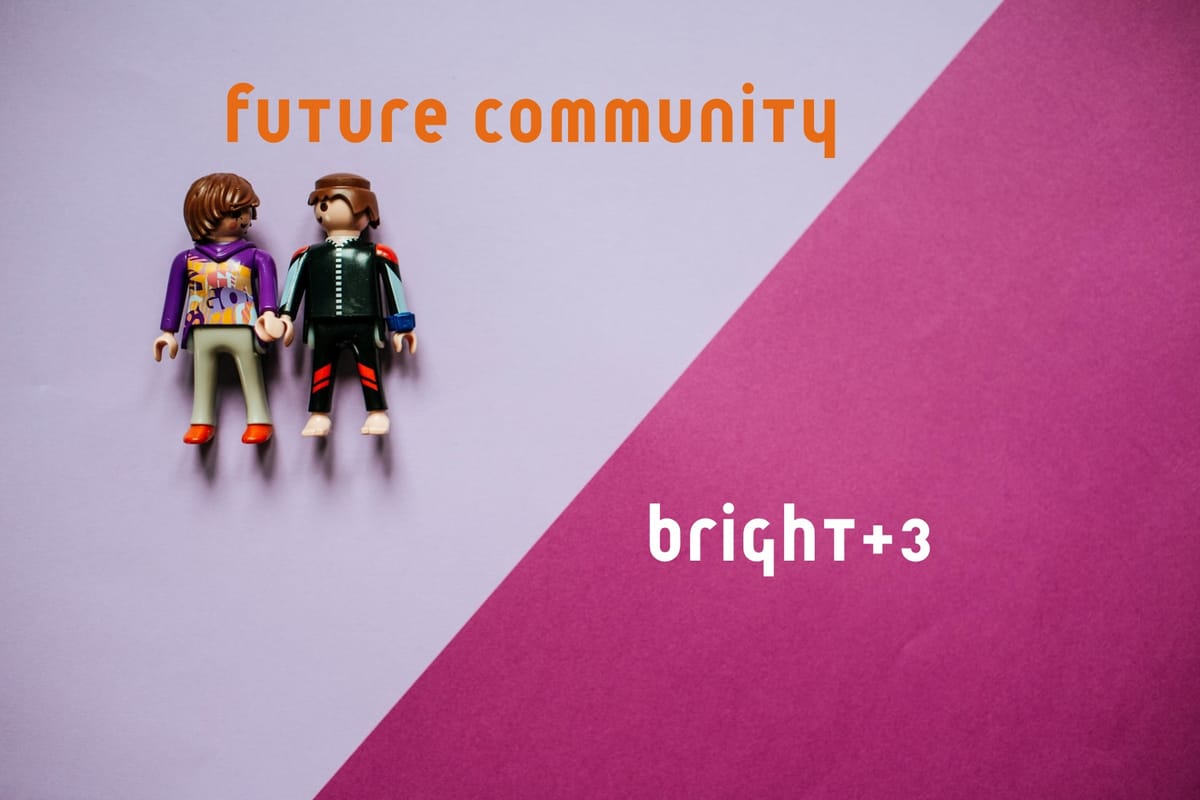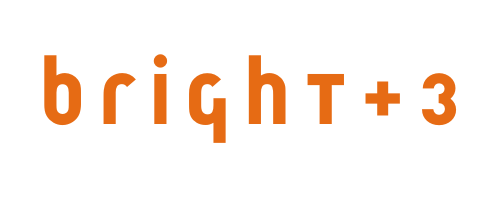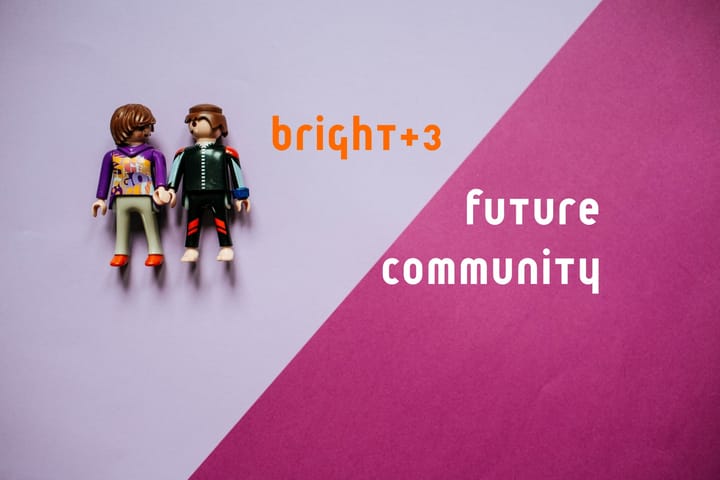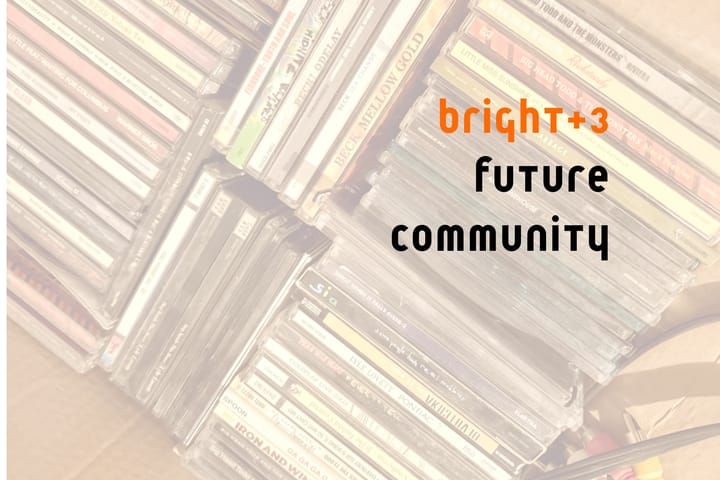5 ways nonprofits can raise money with newsletters
Use subscriptions, premium content, peer-to-peer and more to bring in new and increased revenue with newsletters.

Welcome 👋 Rebecca B (and just Rebecca), Hannah, Niani, Sefiya, Danielle, L, Jill, Angelique and Marcella. Good to have you here! Reply and say hello if you haven't yet. Today we're talking about newsletter revenue for nonprofits. There are a bunch of new Future Community Jobs, too, if you want to hop down there.
On the blog: What organizations hoping to survive (and thrive) in a time of chaos can learn from evolutionary biology.
Newsletters and fundraising
You can reach people and bring them into conversation with newsletters or really any communications product focused on a clear and concise audience.
Email newsletters have a couple strengths tied to their freedom from platform restrictions: you can vary length, use of text and visuals, get better engagement metrics, and can be far more sure your communication will land in front of someone.
But let's talk about money. Because nonprofits and other organizations face harsh realities and resource constraints. Any dollar spent on communications needs to be doing some fundraising work.
Here are five ways newsletters can help nonprofits raise money and find new revenue. You can decide if/how any of these have a fit in your work though I'm happy to talk with you about that.
[1] Subscriptions (aka monthly donors)
Newsletters should offer subscribers consistent, unique, and useful content. This is content worth paying for and people will pay for subscriptions. Substack is built on paid subscriptions (though you'll be getting ads soon enough).
Not everyone will pay for newsletter subscriptions (or your newsletter subscription). But you can expect 1 to 5 percent of subscribers to pay. A social good nonprofit can also offer benefits, impacts, and plain good vibes that add value to a paid subscription offer. This is something that many regular nonprofit monthly donor programs are missing.
[2] Premium content
We're not talking about paywalled content though that's always an option and could make sense in some cases (some membership and/or news organizations).
A good newsletter is meeting the needs of an audience that gets value from your content. They are engaged, interested, and trust that you deliver something they need or just enjoy.
This makes it possible to offer higher value content that could be delivered through higher cost subscriptions or simple one off purchasing or subscription access. Perhaps you have census, economic, ecological, or research data that could source a newsletter for specialist subscribers willing to purchase reports or pay more for your analysis. Heatmap, a newsletter about climate change policy and politics, offers Plus and Pro premium options that include analysis, data, and more.
[3] Improved or new donors for your regular fundraising
Newsletters, with their focused and/or personal voice, can be a way to reach new audiences or better engage existing audiences. These new and/or engaged folks are prospects for first donations and upgrades.
This is also a reason why nonprofits should consider running newsletters in/on their existing email or eCRM platform. You want to be able to see the relationship between newsletter subscribers, their engagement, and if/how they engage with other communications and fundraising products.
[4] Support for peer-to-peer fundraising
Newsletters deliver focused content to a focused audience. They also provide a more community-driven content platform than standard email calendars and content. You can write about people and events.
This makes newsletters a good platform for supporting peer-to-peer fundraising programs and communities.
[5] Supporting large prospects: foundations and major donors
We're talking thought leadership here. A newsletter can consistently demonstrate your organization's analysis, research, and handle on policy, organizing, community leadership and more. It is an easy way for people in foundations, media, politics and other spaces to get to know your people and your work.
It can be tough to directly correlate revenue with a thought leadership newsletter (though I'd love to see a "Click here to make a $250,000 donation" button). The rewards can be high, though.
Sidenote: thought leadership can be a good way to reach potential staff, board and volunteers.
[6] Bonus idea: Advertising
The idea of putting paid ads in your nonprofit newsletter is sure to give most of you the ick. But, you know what, it's your newsletter. And it's going to your audience of people who trust you. So you have complete control over who advertises in it. As well as a strong understanding of your audience. This means that newsletters can be valuable advertising platforms.
Tread wisely here, of course. But we're not talking about turning nonprofit newsletters into homes for clickbait banner ads. There are many ways to work advertising and partnerships into newsletter content. Check out the link in Bright Ideas below for more on newsletter ads.
Bright Ideas
Timely reading, events, trainings.
- Yes, I texted the number on the sign. Kate Bingaman-Burt talks with Landon in Portland about his roof cleaning signs in what's probably the best thing you'll read all day. ht Scott Kirkwood for this link.
- How Free Press created its Media Capitulation Index by Tim Karr (with links to the index itself).
- Substack sent a push alert promoting a Nazi blog by Taylor Lorenz. If Substack's fascism problem doesn't bother you then let's talk about all the ways the user experience is broken. It kills me that half the links in Bright Ideas are going to Substack where you'll have to endure stupid recommendations and logins and other cruft. </rant>
- Why journalists need a theory of change by Nicole Lewis and Lam Vo.
- How to buy and use newsletter ads to grow your subscribers quickly by Maliha at The Side Blogger.
- Extreme heat is causing a black suicide crisis in Phoenix. Urban farms offer a lifeline by Adam Mahoney in Capital B. HT Eve Fox. Just great storytelling.
- Viral ≠ Power: What Real Worker Power Looks Like by Adam Quintero. HT H Kapp-Klote.
The links below fall into the category labeled "depressing reading about AI."
- AI summaries cause 'devastating' drop in audiences, online news media told by Michael Savage in The Guardian.
- Trump's Order Against 'Woke AI' Will Create Real Harm by Camille Stewart Gloster.
- The dystopai of Trump's AI inaction plan by Brian Merchant (my title, not his).
Future Community Jobs
These are roles spotted in the last 5 or 6 days. Check out the full list here as well as resources page for job seekers. Want to post a job? Send an email.
Illinois State Lead, Lobbyist and Strategist at Climate Cabinet [Remote in Illinois]
🗞️ Audience, content, journalism and news roles
- Investigative Reporter : Southern Poverty Law Center [Remote in the US]
- Senior Science Investigative Reporter : The Guardian [Washington, DC]
🗣️ Communications
- Digital Content Writer/Editor : Breakthrough T1D [Remote in the US / New York City]
- Communications Coordinator : Freedom for Immigrants [Remote in the US]
- Communications Manager : Creative Commons [Remote in the US or Canada]
- Interim Communications and Media Relations Manager : Pivotal Ventures [Washington, DC]
- Communications Director : Rank the Vote [Remote]
- Chief Marketing Officer : National Forest Foundation [Remote / Washington, DC preferred]
- Program Manager, Storytellers Collective : National Geographic Society [Washington, DC]
⚡ Nonprofit Roles
- Artist and Influencer Engagement Strategist : ACLU [New York City]
- Program Manager, Dialogue for Justice : Restorative Justice Initiative [New York City]
- Virginia Regional Organizing Director : NextGen America [Harrisonburg, VA]
- Research Manager - Hidden Tribes : More in Common [Washington, DC]
- Illinois State Lead, Lobbyist and Strategist : Climate Cabinet [Remote in Illinois]
- Director of Partnerships : Vote America [Remote]
- Political Program Manager : Swing Left and Vote Forward [Washington, DC]
- Digital Director : Americans for Responsible Innovation [Washington, DC]
- Civic Media Campaign Manager : Free Press [Remote in the US]
- Research Analyst : Greenlight America [Remote]
- Chief Operating Officer : National Skills Coalition [Remote in the US]
- Director of Water Resources : Alliance for the Great Lakes [Chicago / Remote in the Great Lakes region]
- Digital Storytelling Manager : Climate Solutions [Seattle / Portland]
- Senior Marketing Manager : Center for Disaster Philanthropy [Remote in the US]
- President & CEO : Greenlining Institute [Oakland]
- Creative Resources Director, Advocacy : Television Academy [Los Angeles]
- Energy Policy Analyst : Gridworks [Remote / Pacific Time Zone]
- Digital Director : Institute for Middle East Understanding [Washington, DC preferred / Remote in the US]
- Northern Rockies Conservation Director : American Rivers [Bozeman, MT / Remote in Idaho, Montana or Wyoming]
- VP, Community : Mozilla Foundation [Remote in Canada, Germany, UK or US]
- Climate Leadership Coordinator : Indigenous Climate Action [Remote in Canada]
- Senior Strategist, State and Local Advocacy, Advocacy & Partnerships : Vera [Brooklyn / Washington, DC]
- Web and Analytics Manager : Brookings Institution [Washington, DC]
Over 1,000 amazing people read Future Community. I know a lot of them personally.
Some are hiring.
Many are looking for a role.
Reach out if you want help finding or filling a role.
I have some ideas for you.
💰 Fundraising and Development
- Digital Fundraising Associate : Earthjustice [Remote in the US]
- Development Manager : Creative Commons [Remote in the US or Canada]
- Director of Philanthropy, Major Gifts in San Francisco and other development roles across the US : CARE
- Donor Engagement Coordinator : Institute for Citizens and Scholars [Princeton, NJ]
- Grants and Finance Director (p/t) : Humane Intelligence [Remote]
- Director of Fundraising : Vote America [Remote]
- Development Data Manager : League of Conservation Voters [Remote in the US]
- Chief Development Officer : Conservation Lands Foundation [Remote]
- Grants Manager : Michigan Public [Ann Arbor, MI]
💸 Foundations and Philanthropy
- Assistant Director, Democracy and Power Innovation Fund : Rockefeller Family Fund [New York City]
- Associate Director of Programs and Coalition Engagement : Mental Health Storytelling Initiative at Moore Impact [Los Angeles]
- Program Officer, Partner Outreach : Gates Foundation [Seattle]
💻 Agencies, politics, products, projects & more
- Senior Data Scientist : Consumer Reports [Yonkers, NY / Colchester, CT / Washington, DC]
- Innovation Lab Research Engineer : Consumer Reports [Remote]
- Design Lead : Forum One [Remote]
- Senior Product Designer, Donations : NPR [Remote / Washington, DC]
Future Community is a product of Ted Fickes and Bright+3. Reply or visit Bright+3 to get in touch and learn more about our work.


